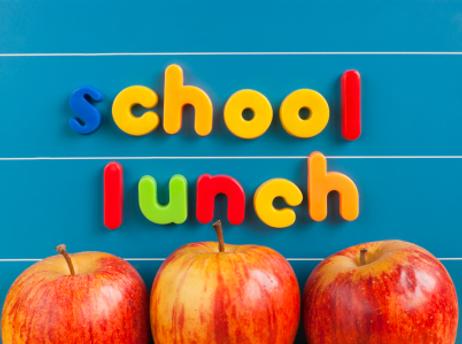This year, Boston Public Schools students will be returning to free lunches when they return to school. The large district recently joined a national program that serves free meals to all students, regardless of income level. This program eliminates the need for families to complete paperwork involving sensitive information like income amounts and ensures every student has access to a hot, nutritious lunch as part of their daily learning experience.
No Paperwork Required
The Boston Globe reports that the district has signed on to a federal initiative designed to simplify the process of offering free or reduced-price lunches to low-income students in a district. In some cases, the process of qualifying for affordable meals in school meant filling out complex paperwork that families might not always understand. For example, families in Boston Public Schools speak as many as 100 different languages, which meant that even forms completed in English might be difficult for some parents to comprehend completely.
This video explains how the Community Eligibility Option works in detail.
In addition, the process of receiving free lunches can create a socio-economic divide in some schools, as some students get free food and others had to pay for it. While many students used identification cards which made the process more discreet, some students still pay for their meals with cash. By allowing every student access to a free meal, needy students are no longer singled out in the lunch line.
Capitalizing on the success of the Breakfast Program
According to CBS Local, the lunch program follows the successful launch of the free breakfast program last year. The news station reports that the universal breakfast program waived charges for the morning meal and saved participating families around $230 per student. In addition, schools knew that students would receive the nutrition in the morning they needed to continue the learning process throughout the school day.
This year, the district will expand the program to include the lunch meal. The website for Boston Public Schools explains that around 78 percent of the students in Boston schools currently qualify for free or reduced-price lunches. The reduced price for preparing students is 40 cents, rather than the $2.25 charge for elementary students and $2.50 for high school students. School officials also stated that more students could have qualified for the program if more parents had submitted the qualifying paperwork.
This video describes the free lunch program in Boston schools.
"Children can focus on learning when they are well-fed, and families can focus on education when they don't have to focus have to budget for school meals every week," John McDonough, interim superintendent for Boston Public Schools, stated in the press release on the district's website. "This program makes sense for students. We expect every major city to join this national program in the next few years – and we can put Boston's families at the forefront."
Savings for Families
The website also reports that Boston families will save between $405 to $455 per student each year. The cost of lunch at school added up to $943,000 for the Boston school district last year. However, the district could only collect $585,000 of the total since it made allowances for situations like individual hardships.
Last year, the district lost about $350,000 in unpaid lunch fees, which made up approximately one-third of the total amount allotted for full or reduced-price lunches. When families don't pay their lunch fees, it puts school administrators in the position of playing bill collectors. In most cases, losses are simply covered through other parts of the school budget. Unfortunately, this practice diverts funds that could have gone to teachers or other learning resources.
"We are caught between a rock and a hard place," Michael Peck, director of the Boston district's food and nutrition services, told the Boston Globe. "Many principals have told me, 'The family doesn't have the money; what do I do?'"
About the Community Eligibility Option
The Community Eligibility Option is a federal program that was launched in 2010 as a part of the Healthy, Hunger-Free Kids Act. States that participate in the program are reimbursed based on the number of students within the district that qualify for free school meals. Since no paperwork is completed, the number of qualifying students is determined through the number of students enrolled in Head Start programs or have been identified as homeless, migrant, living in households that receive food stamps or living in foster care.
This video explains how the Community Eligibility Option works.
According to the Food Research and Action Center, the first three states to adopt the program during the 2011-2012 school year were Illinois, Kentucky, and Michigan. The following year, Washington D.C., Ohio, West Virginia, and New York also began offering the program. Now, Massachusetts is joined by Georgia, Florida, and Maryland to launch the program during the upcoming school year.
To qualify for the program, a district must have a certain percentage of students already qualifying for free or reduced-price lunches. Qualification is based on a somewhat complex formula that considers factors like the percentage of families in the district receiving food stamps. Massachusetts was not on the list when the Agriculture Department first chose states to participate in the pilot program. However, school officials in the Boston district pushed their state to be added to the list – a request granted this past summer.
Children that eat nutritious meals daily are better equipped to learn in the classroom. By offering all students in Boston access to a free lunch and breakfast daily, Boston Public Schools are doing its part to ensure all students benefit from the best possible learning environment.
Questions? Contact us on Facebook. @publicschoolreview















